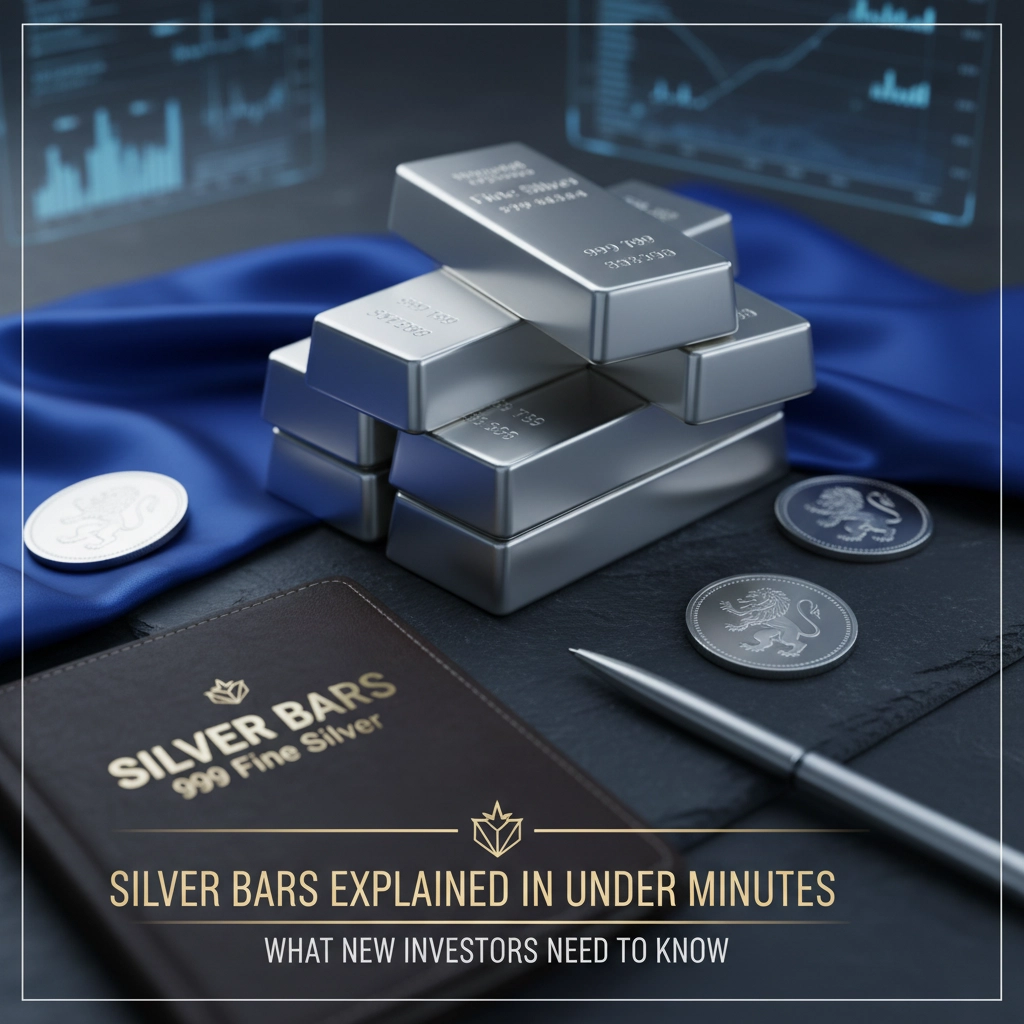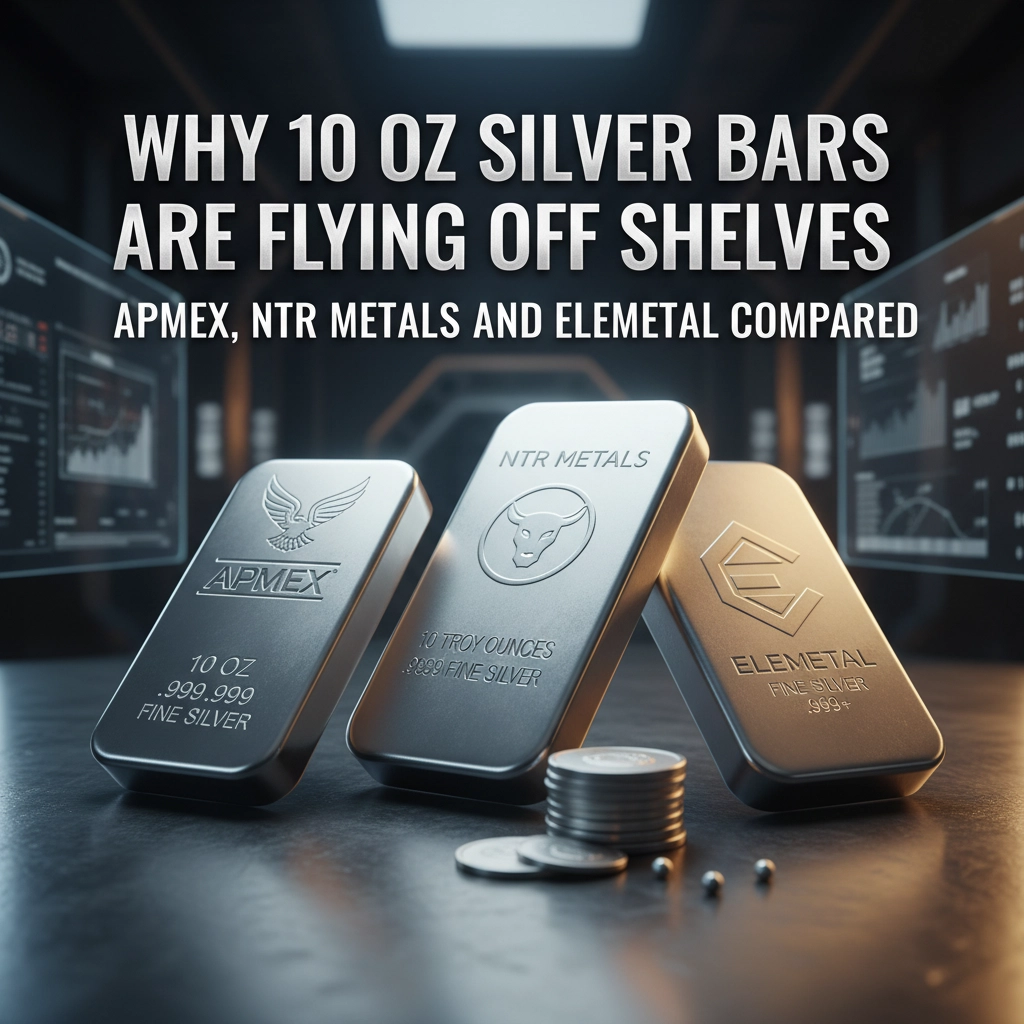Picture this: you're 55, sipping coffee on your deck while your former colleagues are still grinding through their morning commute. Early retirement isn't just a dream: it's an achievable goal with the right wealth strategy. But can gold really help you get there faster?
The short answer might surprise you. Gold won't make you retire at 35 like some tech startup founder, but it can absolutely play a strategic supporting role in building the kind of stable, diversified portfolio that makes early retirement possible. Let's dive into how smart investors use bullion as part of their long-term wealth strategy.
The Reality Check: Gold as a Wealth Builder vs. Wealth Protector
Here's the truth that many gold enthusiasts don't want to hear: gold alone won't accelerate your path to early retirement. Unlike dividend-paying stocks or rental properties, gold doesn't generate income. It doesn't compound. It just sits there, holding its value while inflation eats away at everything else around it.
But that's exactly what makes gold so valuable in a retirement strategy.
Think of gold as the defensive linebacker of your investment portfolio. While your growth stocks are making spectacular runs down the field, gold is there protecting your gains from economic turmoil, market crashes, and currency devaluation. This defensive strength allows you to take calculated risks with other parts of your portfolio: the parts that actually accelerate your retirement timeline.

How Gold Fits Into Your Early Retirement Strategy
Smart early retirees understand diversification isn't just a buzzword: it's survival. When you're planning to live off your investments for potentially 40+ years, you can't afford to have everything tied up in assets that swing wildly with market sentiment.
Gold provides portfolio stability that's crucial for early retirement success. During the 2008 financial crisis, while stock portfolios were getting crushed, gold investors watched their holdings maintain value. In 2020, when markets initially tanked due to COVID uncertainty, gold prices actually rose.
This isn't about getting rich quick: it's about getting rich and staying rich. When you retire early, you're essentially betting that your accumulated wealth will last decades longer than traditional retirement planning assumes. Gold helps ensure that bet pays off.
Strategic Allocation: How Much Gold Should Early Retirees Hold?
Financial experts recommend different allocation percentages, but here's what makes sense for early retirement planning:
Conservative approach: 5-10% of your portfolio
Moderate approach: 10-15% of your portfolio
Aggressive protection: 15-20% of your portfolio
Ray Dalio, founder of Bridgewater Associates, recommends up to 15% allocation to gold as an excellent diversifier. For early retirees who need their portfolios to weather multiple economic cycles, the higher end of this range often makes more sense.
Why? Because when you're 35 and retired, you might face three or four major economic downturns before you even reach traditional retirement age. Gold allocation helps ensure your portfolio survives each one.

Timing Your Gold Investments for Maximum Impact
When you buy gold matters just as much as how much you buy. Smart timing can significantly impact your overall portfolio performance and retirement timeline.
Buy gold when:
- Inflation rates are rising or expected to rise
- Economic uncertainty is increasing
- Stock markets are at historic highs
- Government debt levels are concerning
- Currency devaluation risks are elevated
Consider reducing gold exposure when:
- Economic growth is strong and stable
- Interest rates are rising significantly
- Stock markets are undervalued
- You need to rebalance toward growth assets
The key is dollar-cost averaging your gold purchases over time while staying aware of macro-economic trends. This approach helps smooth out price volatility while ensuring you're building a meaningful position.
Physical Bullion vs. Other Gold Investment Options
As you're building your early retirement strategy, you have several ways to include gold in your portfolio:
Physical Bullion (Coins and Bars)
Pros: Direct ownership, no counterparty risk, tangible asset
Cons: Storage costs, insurance needs, liquidity challenges
Physical bullion offers the purest exposure to gold prices, but it requires careful consideration of storage and insurance costs. For early retirees, these ongoing expenses can eat into overall returns.
Gold IRAs and Self-Directed Retirement Accounts
Gold IRAs allow you to hold physical gold within a tax-advantaged retirement account. This can be particularly attractive for early retirees who want to maximize tax efficiency while maintaining gold exposure.
Gold ETFs and Mutual Funds
Pros: Easy liquidity, no storage costs, professional management
Cons: Management fees, no physical ownership, counterparty risk
For most early retirement strategies, gold ETFs offer the best combination of convenience and exposure without the headaches of physical storage.

Real-World Example: Gold in Action
Let's look at a concrete example of how gold preservation works in practice. Imagine you invested $13,000 in gold at $1,300 per ounce back in 2019, purchasing 10 ounces. By 2024, that same 10 ounces would have allowed you to purchase over 70% more goods and services despite inflation eroding the purchasing power of cash during the same period.
While this represents substantial wealth preservation rather than acceleration, consider what this means for early retirement: your nest egg maintains its real purchasing power over decades. That's the foundation that makes early retirement sustainable.
Common Mistakes That Derail Gold Strategies
Mistake #1: Treating gold as a get-rich-quick scheme
Gold is wealth preservation, not wealth creation. If you're looking to retire early, you still need growth assets doing the heavy lifting.
Mistake #2: Over-allocating to gold
More than 20% allocation to gold typically reduces overall portfolio returns without proportional risk reduction.
Mistake #3: Panic buying during crises
The best time to buy gold is before you need it, not when everyone else is panicking.
Mistake #4: Ignoring storage and insurance costs
These ongoing expenses can significantly impact your overall returns, especially for physical bullion.
Mistake #5: Not rebalancing
As gold prices rise or fall, your allocation can drift significantly from your target. Regular rebalancing maintains your intended risk profile.
Building Your Gold-Enhanced Early Retirement Plan
Here's a practical framework for incorporating gold into your early retirement strategy:
Step 1: Determine your target allocation (5-15% is typical)
Step 2: Choose your investment vehicle (ETFs for simplicity, physical for maximum control)
Step 3: Set up regular purchases to dollar-cost average your position
Step 4: Monitor and rebalance quarterly or semi-annually
Step 5: Plan your exit strategy for when you need to liquidate assets
Remember, gold works best as part of a comprehensive strategy that includes growth investments, income-producing assets, and emergency funds. It's the steady foundation that lets you sleep well while your other investments work harder.

The Path Forward: Gold as Your Retirement Ally
Can gold help you retire earlier? Not directly: but absolutely as part of a well-constructed portfolio. Gold provides the stability and wealth preservation that makes aggressive early retirement strategies possible. It's the difference between taking calculated risks and gambling with your future.
The investors who successfully retire early understand that wealth building is only half the equation. Wealth preservation is equally important, especially when you're planning to live off your investments for potentially 50+ years.
Gold doesn't make you rich: it helps you stay rich. And for early retirees, staying rich over multiple decades is exactly what separates success from cautionary tales.
Ready to explore how gold can strengthen your early retirement strategy? The precious metals market offers numerous opportunities for strategic investors who understand gold's protective role. Whether you're just starting to build your retirement portfolio or you're ready to add some defensive strength to your existing investments, now's the time to consider your options.
Your future self: the one sipping coffee on that deck at 55: will thank you for making the smart, diversified moves today that make early retirement not just possible, but sustainable for decades to come.







Leave a comment